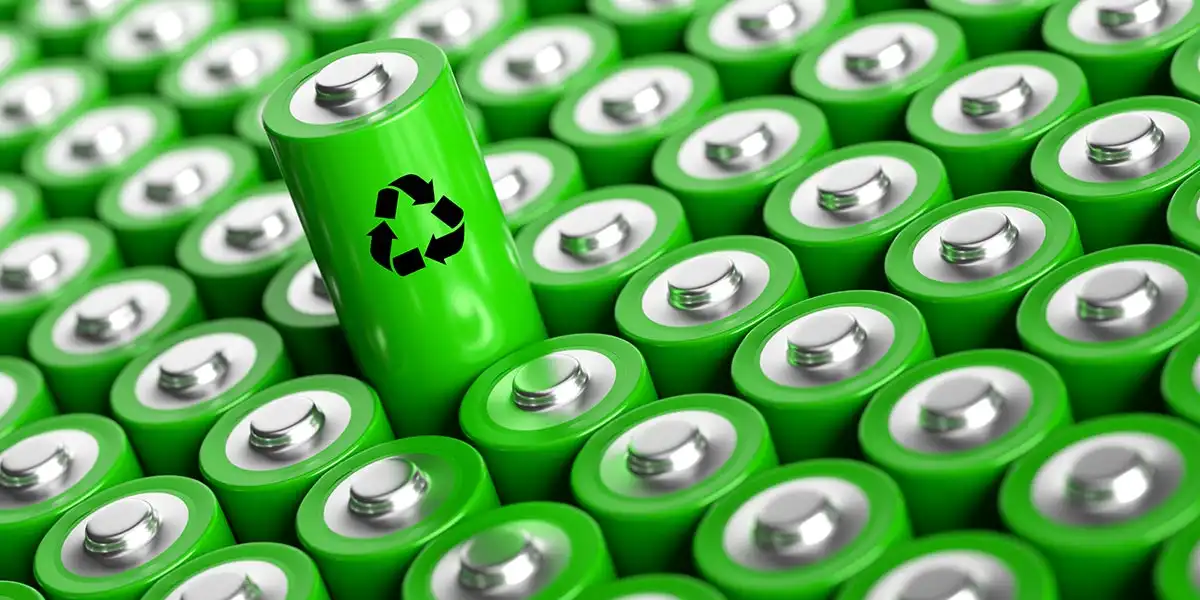
Oct 15, 2025
Blog Battery Recycling: Powering a Greener Tomorrow
As the world electrifies through electric vehicles (EVs), portable electronics, and renewable energy storage systems, these technologies have become the cornerstone of the clean energy revolution. However, this rapid adoption presents a pressing challenge: what happens when these batteries reach the end of their lifespan? Enter battery recycling, a critical solution that is gaining momentum globally.
The battery recycling market is no longer just a niche environmental initiative. It is now a rapidly growing industry with significant implications for sustainability, energy security, and economic development. As raw material shortages loom and regulations tighten, recycling is stepping up as both an ecological necessity and a commercial opportunity.

According to BCC Research, the global battery recycling market is expected to grow from $12.8 billion in 2025 to $19.8 billion by the end of 2030, at a compound annual growth rate (CAGR) of 9.2% from 2025 to 2030.
Batteries, particularly lithium-ion and lead-acid types, contain valuable and potentially hazardous materials, including lithium, cobalt, nickel, and manganese. Using batteries can pose significant environmental and health risks if not handled properly. However, when recycled, these same materials can be recovered and reused, reducing the need for virgin mining and lowering greenhouse gas emissions.
From an economic standpoint, recycled materials are often cheaper than newly mined ones, especially amid growing geopolitical tensions and price volatility in raw material supply chains. For manufacturers, battery recycling provides a means to stabilize input costs and achieve sustainability goals.
The global market for battery recycling is expected to grow from $12.8 billion in 2025 and is projected to reach $19.8 billion by the end of 2030, at a compound annual growth rate (CAGR) of 9.2% during the forecast period of 2025 to 2030.
The global battery recycling market is projected to witness significant growth over the next five years, driven by several converging trends:
Regions such as Europe and the Asia-Pacific are currently leading the charge, with aggressive government mandates and public-private partnerships investing in large-scale recycling facilities.
Battery recycling spans a range of chemistries and applications, each with its own opportunities and challenges. The major market segments include:
In the end-use industry, automotive remains the dominant driver, followed by consumer electronics, industrial applications, and energy storage systems (ESS).
Battery recycling is a crucial enabler of the circular economy, a system where resources are reused and waste is minimized. Recycling allows recovered metals to re-enter the supply chain, reducing the environmental footprint of new battery production.
Additionally, recycling:
The CO₂ savings from using recycled battery materials rather than mining and processing new ones can be substantial, particularly for energy-intensive metals such as cobalt and nickel.
Regulatory Landscape
Governments around the world are tightening rules around battery disposal and material recovery. Key regulatory developments include:
These policies create environmental accountability and shape the business models of battery manufacturers and recyclers.
Despite its potential, battery recycling still faces hurdles:
However, ongoing investments in AI-driven material sorting, robotic disassembly, and second-life battery applications are helping to overcome these challenges. As scale and technology improve, battery recycling is set to become more economically viable and environmentally essential.
Battery recycling is no longer optional; it is a strategic imperative. As global demand for energy storage continues to surge, recycling will play a central role in establishing a secure, sustainable, and cost-effective battery supply chain.
The companies, countries, and consumers that invest in this green transformation today will lead the charge into a more electrified and environmentally conscious future.
Consider becoming a member of the BCC Research Library and gain access to our full catalog of market research reports in your industry. Not seeing what you are looking for? We offer custom solutions too, including our new product line: Custom Intelligence Services.
Contact us today to find out more.

Sandeep is a Senior Executive in Marketing Operations at BCC Research, proficiently serving as a graphic designer and content creative specialist. His expertise extends to AutoCAD and Revit, and he has made valuable contributions to the event industry with his design skills.

We are your trusted research partner, providing actionable insights and custom consulting across life sciences, advanced materials, and technology. Allow BCC Research to nurture your smartest business decisions today, tomorrow, and beyond.
Contact UsBCC Research provides objective, unbiased measurement and assessment of market opportunities with detailed market research reports. Our experienced industry analysts assess growth opportunities, market sizing, technologies, applications, supply chains and companies with the singular goal of helping you make informed business decisions, free of noise and hype.